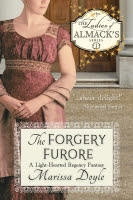 I’m researching a new book (lovely, lovely research), and I found myself looking more deeply at navigation on the Thames during the nineteenth century. The River Thames was the lifeblood of London and every town upstream and down, carrying goods and people where they were needed. I spent nearly 30 years living on another great river, the Columbia, so I had some idea of how important a waterway could be. What surprised me were the number of locks, and how they were used.
I’m researching a new book (lovely, lovely research), and I found myself looking more deeply at navigation on the Thames during the nineteenth century. The River Thames was the lifeblood of London and every town upstream and down, carrying goods and people where they were needed. I spent nearly 30 years living on another great river, the Columbia, so I had some idea of how important a waterway could be. What surprised me were the number of locks, and how they were used.
The Columbia River is confined by hydroelectric dams that also serve as flood control mechanisms. These dams have locks to allow ship traffic passage. When I sailed on the Lady Washington, our state’s tall ship, we passed through the lock at McNary Dam, and the massive gates reminded me of the mythical Mordor of Tolkien fame. But the locks on the Thames weren’t designed for electric power or flood control. They were originally created for navigation purposes.
The Thames is an aged river. As such, its braided, curving channels make for a leisurely passage at best. So, in 1751, George II chartered the Thames Navigation Commission to ensure safe and efficient travel along the river. Through the Regency period, they oversaw the building of 25 locks to even out rough patches and speed transit. The City of London had jurisdiction of the river through its environs and built an additional set of locks.

Locks came in several designs, but the basic purpose was the same, to store up water that could be flooded downstream to make passage easier or faster. Some of the locks had sloping earthen sides, but most were lined with brick or stone. Gates of massive timbers marked either end and had to be cranked open and shut, often by hand. To facilitate the process, most locks were staffed by lock keepers, with a cottage to live in nearby. (Photo by Trevor Rickard)
The Thames Navigation Commission sounds like an interesting group. At the time of the Regency, it included as many as 600 people. Yes, you read that right—600. Care to envision that committee meeting? Every person with more than one hundred pounds to his name who owned land along the river was a member. So too was Oxford University and each mayor with a town along the river.
But with all these possibly competing interests, a quorum was only 11 commissioners. And if those 11 commissioners decided your land would be a good spot for a lock and cottage, you had no choice by law but to sell. They could also select land to be used for tow paths for barges and canal boats, so long as they didn’t take someone’s house, garden, or orchard.
Some interesting plot ideas there, eh? I think that’s a lock.





No comments:
Post a Comment